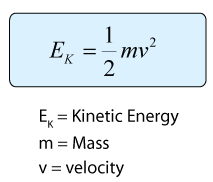709-218-7927 The Landfall Garden House 60 Canon Bayley Road Bonavista, Newfoundland CANADA A0C 1B0 |
|---|
Why We Cant Recycle Second Stages
This is based on an article I read or watched about a month ago. The article pointed out that the first stage rocket is going only mumble-mumble kilometres per hour when it has completed its job, but the second stage rocket is going mumble-mumble-mumble-mumble-mumble kilometres per hour when it has completed its job.
Which makes us focus on Newton’s formula for Kinetic Energy.

Although the mass of the first stage is significantly bigger than the mass of the second stage, the velocity of the second stage is significantly significantly significantly bigger than the velocity of the first stage, and it is the SQUARE of the velocity that amplifies this factor.
OK.
So you don’t like mathematics.
How about violent wars?
Consider a sailor on a world-war-one battleship. The sailor is standing on the deck, and is knocked onto his back when a torpedo strikes.
There he is lying, stunned, on his back. The torpedo has struck in the ammunition holds, and a second or two later, the magazine explodes, and the sailor is flung into the air, perhaps two hundred feet or so, and miracle of miracles he falls back on to the deck and is killed by the impact. Correct?
No.
The sailor is killed before he leaves the deck.
Think of those swing-the-hammer-ring-the-bell scams at the fairgound. The energy in the downward swinging hammer is the energy that raises to weight to just over nine-point-five (Oh bad luck!)
The quantity or amount of energy that impacts the device is equal to the energy required to lift the weight to whatever height.
The energy given is the same as the energy taken away.
So it is with our unfortunate sailor. The energy required to lift his body to a height of two hundred feet is the energy given to his body to start him flying upwards. And that is the same amount of energy that will greet him when he hits the deck (or the ocean, for at these velocities water is a immovable as concrete).
So if the impact with the deck is enough to kill him when he lands, then the impact given to him by the deck, being the same amount, must have been enough to kill him as he commenced his climb.
Therefore he was already dead as he left the deck, long before he returned to the deck.
Back to our rockets.
It takes energy to raise that second-stage to mumble-mumble-mumble-mumble-mumble kilometres per hour, and the energy came from (1) a large first stage full of fuel and (2) a small second stage full of fuel.
The energy comes, of course, from the fuel.
And just like our poor sailor, you will need the same amount of energy for a smooth landing as you required for a smooth takeoff. (Well, almost; parachutes and a slow water landing would suffice)
Which seems to me that if we wanted to reclaim that second stage, especially with a smooth landing back on earth, we would need to equip that second stage with a first stage’s worth of fuel AND a second-stage’s worth of fuel at take off.
And that would me at take-off we would twice as much fuel as that used today.
And that would mean two stages significantly larger than today’s stages.
And that would mean a never-ending race to build a rocket that could contain enough fuel to contain enough fuel to contain enough fuel, …
(I have cut some corners here, but I believe the sailor analogy suffices)
709-218-7927 CPRGreaves@gmail.com Bonavista, Tuesday, October 10, 2023 10:06 AM Copyright © 1990-2023 Chris Greaves. All Rights Reserved. |
|---|